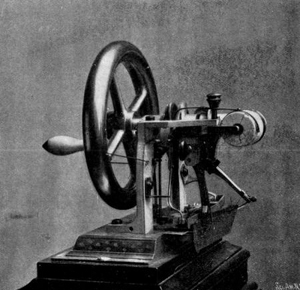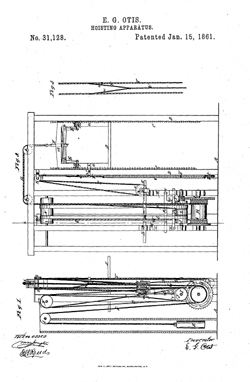Question from Jae D.:
Hello Geek..
I was wondering if you could tell me more about the invention of the arcade claw game. I love those games even if I never win.
Thanks,
Jae D.
The original version of these machines was developed in 1896 from a child’s game. In this version, the player had to dig up candy and other prizes using a mechanical control to steer the tiny crane. Playing one game on the Erie Digger cost a penny.
The digger game hit full production in the 1920’s. The original Erie Digger then had to compete with other versions of the game including the Iron Claw, Miniature Steam Shovel, Electro Hoist and Miami Digger. The Miami Digger was built by William Bartlett and was known for its original design and superior play. It appears that Bartlett was the first to apply for a patent for this new type of arcade game. He received US Patent 1,882,563 on October 11, 1932 for a Coin Controlled Vending Machine.
The popularity of these games continued to grow both as toys and gambling machines in the 1930’s and 40’s. Then in 1951, the days of the digger games were ended with the passing of a new Federal anti-gambling laws. In 1974, with changes made to the gambling laws, new crane games from Europe began to appear in the United States. These games cost 25 cents a play and were much more high tech that the original diggers. Today even more advanced versions of the game can be found anywhere from the arcade to sporting arenas to the movie theater.

 One of the greatest life saving inventions ever made was the EKG. To this day, variations of the original EKG machine help to discover heart disease and prevent heart attacks. An EKG machine picks up electrical pulses from the heart and records them in wave tracings. These waves help physicians diagnose cardiac abnormalities. The development of the first practical EKG began in 1889 at the First International Congress of Physiologists. Willem Einthoven saw British physiologist August Waller demonstrate recording the electrical activity of a heart using his dog.
One of the greatest life saving inventions ever made was the EKG. To this day, variations of the original EKG machine help to discover heart disease and prevent heart attacks. An EKG machine picks up electrical pulses from the heart and records them in wave tracings. These waves help physicians diagnose cardiac abnormalities. The development of the first practical EKG began in 1889 at the First International Congress of Physiologists. Willem Einthoven saw British physiologist August Waller demonstrate recording the electrical activity of a heart using his dog. People attempted for decades to design a properly functioning sewing machine. There were many machines designed and patented which simply did not work. Then in 1830, Barthelemy Thimonnier, a French tailor, developed a successful model. This machine caused fear and outrage among tailors in France. Afraid that they would lose their livelihoods to this invention, a group of tailors destroyed the plant where Thimonnier was producing his sewing machine.
People attempted for decades to design a properly functioning sewing machine. There were many machines designed and patented which simply did not work. Then in 1830, Barthelemy Thimonnier, a French tailor, developed a successful model. This machine caused fear and outrage among tailors in France. Afraid that they would lose their livelihoods to this invention, a group of tailors destroyed the plant where Thimonnier was producing his sewing machine. Did you ever wonder why you have to wait until the final rinse to add the fabric softener to your laundry? Laundry detergent and fabric softener can’t be mixed because the mixture causes a chemical reaction which forms a solid.
Did you ever wonder why you have to wait until the final rinse to add the fabric softener to your laundry? Laundry detergent and fabric softener can’t be mixed because the mixture causes a chemical reaction which forms a solid. Did you know intellectual property protection in America is about as old as America itself?
Did you know intellectual property protection in America is about as old as America itself? The first passenger elevator was designed for France’s King Louis XV for his personal chambers in Versailles in 1743. Called the “Flying Chair” the elevator only went one floor, connecting the king’s chambers to his mistresses’ on the second floor of the palace. The king entered his elevator through his balcony and a arrangement of weights and pulleys hanging inside a chimney were pulled to raise or lower the chair.
The first passenger elevator was designed for France’s King Louis XV for his personal chambers in Versailles in 1743. Called the “Flying Chair” the elevator only went one floor, connecting the king’s chambers to his mistresses’ on the second floor of the palace. The king entered his elevator through his balcony and a arrangement of weights and pulleys hanging inside a chimney were pulled to raise or lower the chair.